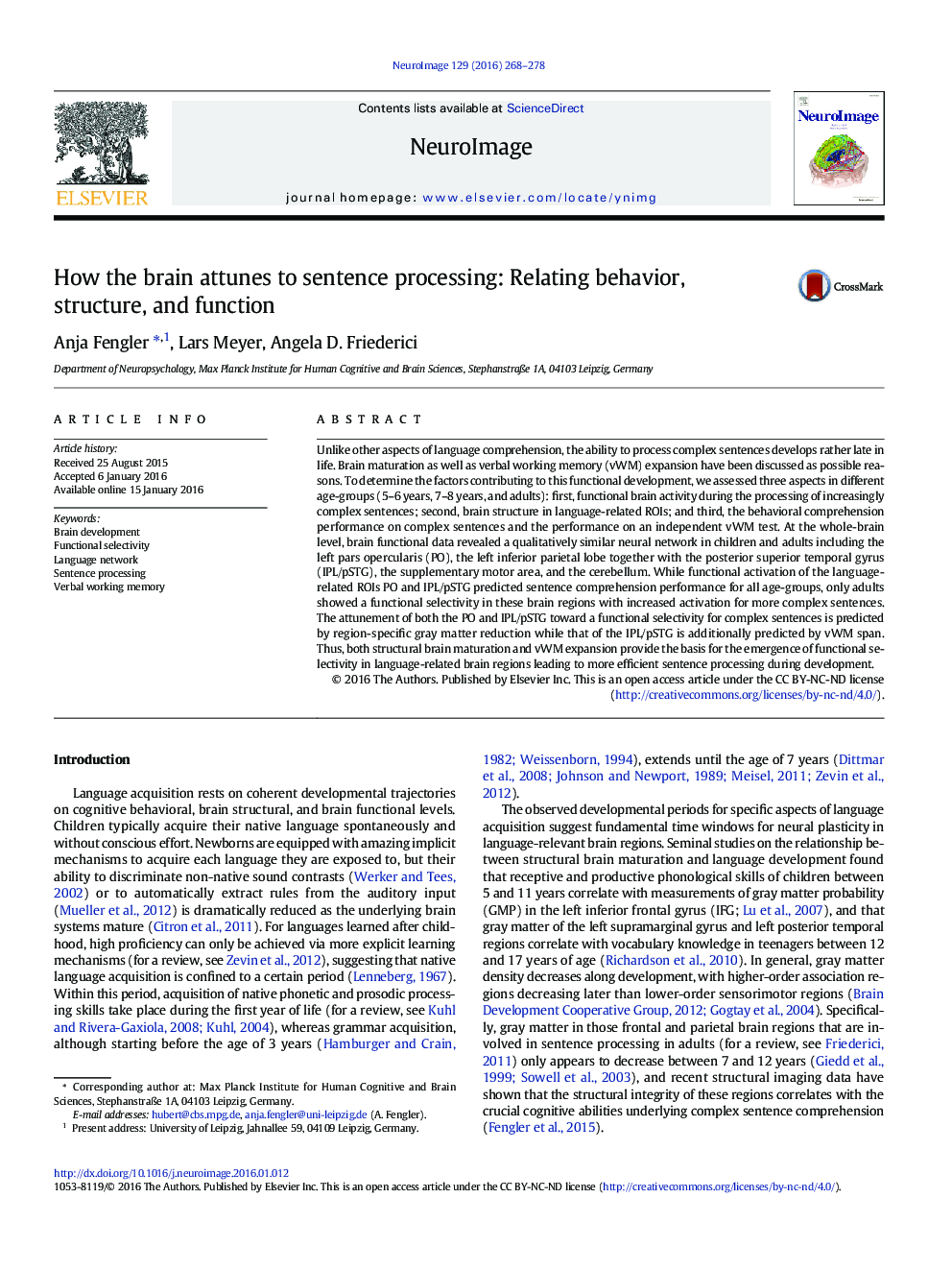| Article ID | Journal | Published Year | Pages | File Type |
|---|---|---|---|---|
| 6023956 | NeuroImage | 2016 | 11 Pages |
Abstract
Unlike other aspects of language comprehension, the ability to process complex sentences develops rather late in life. Brain maturation as well as verbal working memory (vWM) expansion have been discussed as possible reasons. To determine the factors contributing to this functional development, we assessed three aspects in different age-groups (5-6Â years, 7-8Â years, and adults): first, functional brain activity during the processing of increasingly complex sentences; second, brain structure in language-related ROIs; and third, the behavioral comprehension performance on complex sentences and the performance on an independent vWM test. At the whole-brain level, brain functional data revealed a qualitatively similar neural network in children and adults including the left pars opercularis (PO), the left inferior parietal lobe together with the posterior superior temporal gyrus (IPL/pSTG), the supplementary motor area, and the cerebellum. While functional activation of the language-related ROIs PO and IPL/pSTG predicted sentence comprehension performance for all age-groups, only adults showed a functional selectivity in these brain regions with increased activation for more complex sentences. The attunement of both the PO and IPL/pSTG toward a functional selectivity for complex sentences is predicted by region-specific gray matter reduction while that of the IPL/pSTG is additionally predicted by vWM span. Thus, both structural brain maturation and vWM expansion provide the basis for the emergence of functional selectivity in language-related brain regions leading to more efficient sentence processing during development.
Keywords
Related Topics
Life Sciences
Neuroscience
Cognitive Neuroscience
Authors
Anja Fengler, Lars Meyer, Angela D. Friederici,
